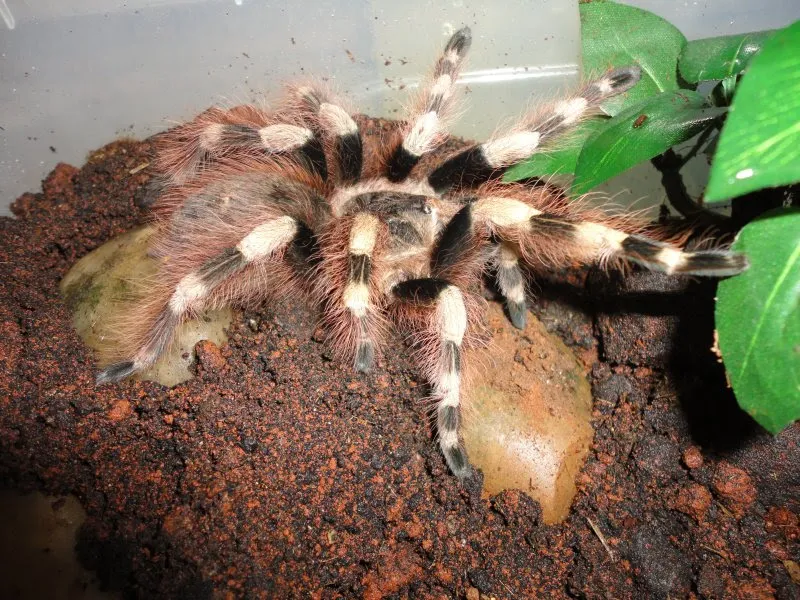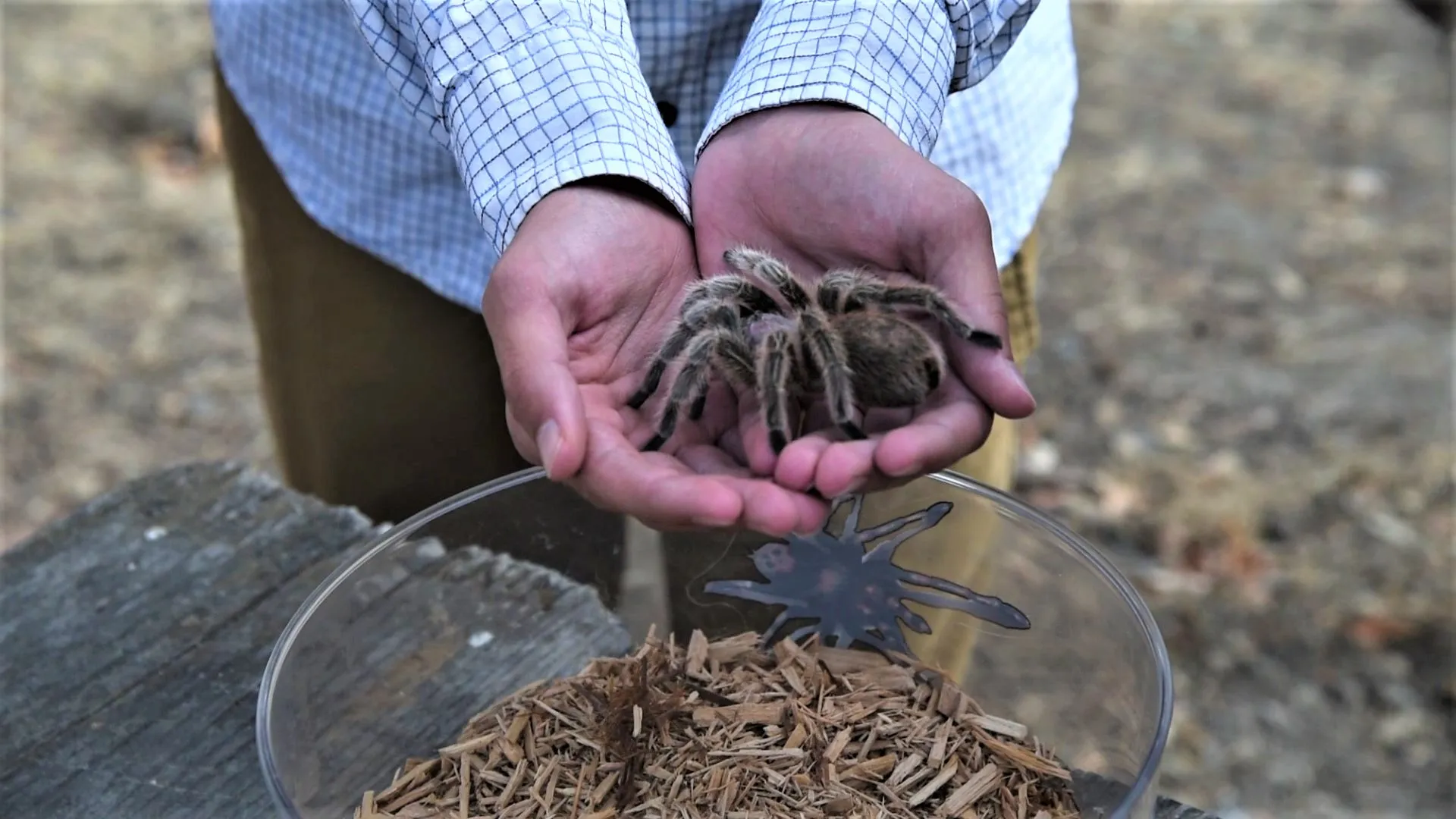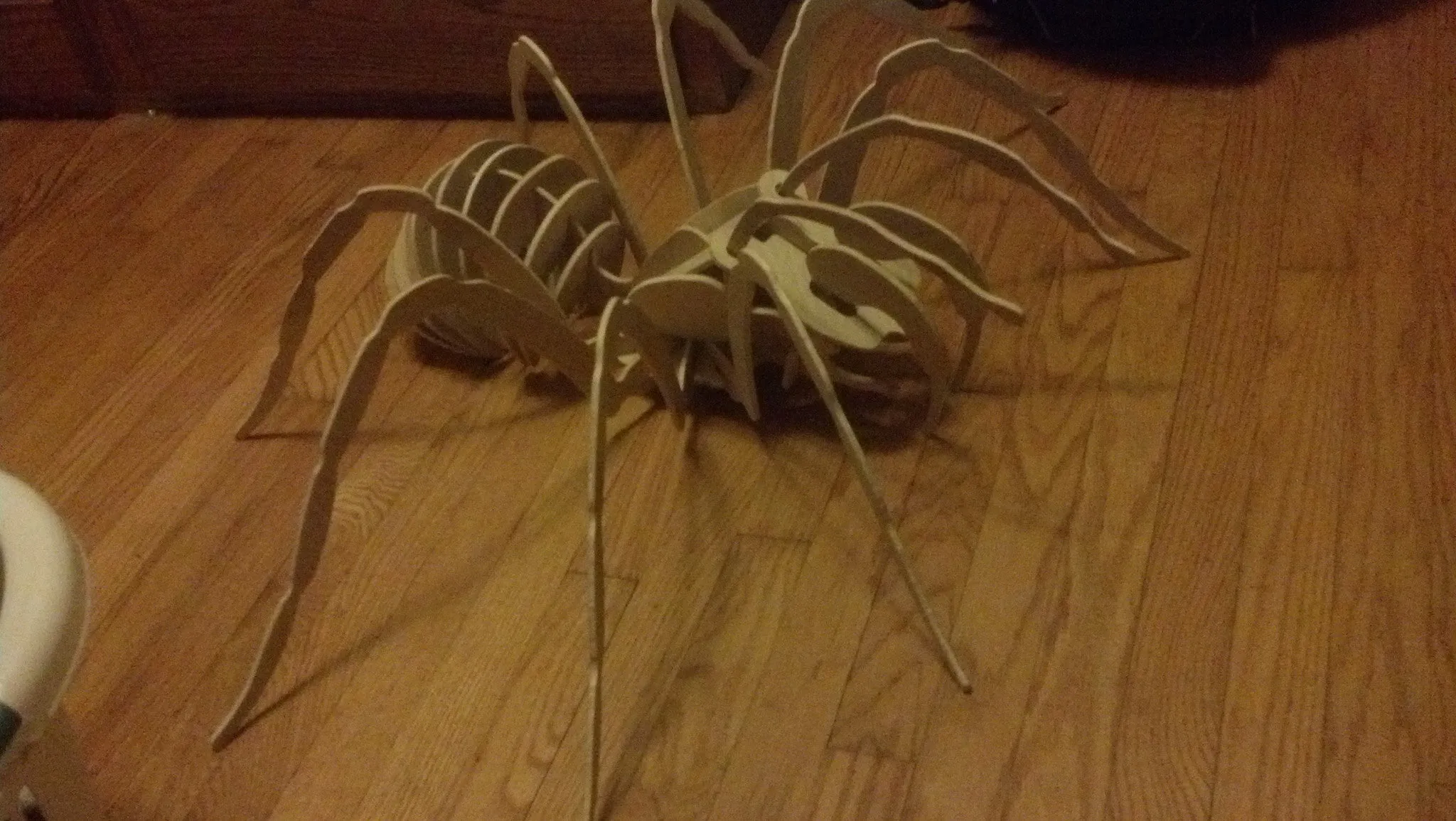Choosing Your First Tarantula
Embarking on the journey of tarantula ownership can be an exciting and rewarding experience. However, before you bring one of these fascinating creatures into your home, it is essential to be well-prepared. Tarantulas, while relatively low-maintenance compared to some other pets, have specific needs that must be met to ensure their health and well-being. Understanding these needs is crucial for providing a suitable environment and giving your new pet the best possible start. This guide will help you navigate the initial steps, providing essential information to make informed decisions and prepare you for responsible tarantula ownership. This involves choosing the right species, setting up a proper habitat, and understanding the basics of their care. It’s a commitment, but the rewards of observing these incredible animals are immense.
Considerations Before Getting a Tarantula
Before you bring a tarantula home, several important factors need careful consideration. These factors will significantly influence your ability to provide proper care and ensure the tarantula’s welfare. Firstly, think about your lifestyle and commitment level. Tarantulas require consistent care, including regular feeding, habitat maintenance, and monitoring for health issues. Determine if you have the time and dedication to meet these requirements. Secondly, consider the cost. While the initial purchase price of a tarantula might be modest, the ongoing expenses can add up. You’ll need to factor in the cost of the enclosure, substrate, food, and any necessary equipment for maintaining the correct temperature and humidity. Additionally, consider the space you have available for the enclosure. Tarantulas, especially larger species, need a spacious habitat to thrive. Make sure you have enough room in your home, and that you can maintain a stable environment for the tarantula. Finally, ensure you are not allergic to arachnids or have any phobias that might make it difficult to care for a tarantula.
Researching Different Tarantula Species

Not all tarantula species are created equal, especially for beginners. Some species are known for being more docile and easier to handle, while others may be more defensive or have specific care requirements. Research is key to finding the right species for you. Look into various options like the Chilean rose hair tarantula (Grammostola rosea), which is often recommended for beginners due to its calm temperament and relatively simple care needs. The Mexican red knee tarantula (Brachypelma hamorii) is another popular choice, known for its beautiful coloration and relatively predictable behavior. Read online forums, consult with experienced tarantula keepers, and explore reputable sources to gather information on different species’ temperaments, sizes, lifespan, and care requirements. Consider how the tarantula’s size will affect its space needs, and whether the species is known to burrow or be arboreal (tree-dwelling), as this will impact the type of enclosure required. Thorough research will help you choose a species that matches your experience level and lifestyle, setting the stage for a successful tarantula-keeping experience.
Where to Buy Your Tarantula
Choosing a reputable source for your tarantula is vital for ensuring you acquire a healthy specimen. Several options exist, each with its own advantages and disadvantages. Local reptile and exotic pet stores can be a convenient option, allowing you to see the tarantula in person before purchasing. However, the selection may be limited, and the staff’s expertise in tarantula care can vary. Always inspect the tarantula for signs of illness or injury, and ask questions about its history and care. Online retailers that specialize in invertebrates offer a wider selection of species, often at competitive prices. However, you won’t be able to examine the tarantula before it arrives, so it’s essential to choose a seller with a good reputation and a guarantee of the tarantula’s health. Look for sellers that provide detailed information about the tarantula’s origin, sex, and age. Consider attending reptile shows or expos, where you can meet breeders and sellers in person. This allows you to interact with experts, ask questions, and examine a variety of tarantulas. Before making a purchase, always research the seller and read reviews from other customers. This will help you avoid potential issues and ensure you are getting a healthy tarantula from a reliable source.
Setting Up Your Tarantula’s Habitat
Creating a suitable habitat is crucial for the health and well-being of your tarantula. A well-designed enclosure provides a safe, comfortable, and enriching environment, mimicking its natural habitat as closely as possible. This section will guide you through the essential elements of setting up the perfect home for your tarantula, covering enclosure selection, substrate choices, and environmental controls. Understanding these aspects will enable you to create a thriving environment where your tarantula can flourish. The habitat should allow the tarantula to exhibit its natural behaviors, such as burrowing, hiding, and hunting. It is very important to avoid overcrowding and ensure the enclosure is escape-proof. Remember, a well-maintained habitat is the foundation of responsible tarantula ownership and contributes significantly to the longevity and happiness of your pet.
Choosing the Right Enclosure

Selecting the appropriate enclosure is the first step in creating a suitable habitat. The size and type of enclosure will depend on the tarantula species and its size. For terrestrial species, a horizontally oriented enclosure is generally preferred, providing ample floor space for burrowing and roaming. Arboreal species, on the other hand, will need a taller enclosure with vertical space for climbing and webbing. The enclosure should be large enough to accommodate the tarantula’s full size, allowing it to move around comfortably and exhibit its natural behaviors. As a general rule, the width of the enclosure should be at least twice the tarantula’s leg span, and the length should be at least three times the leg span. The enclosure material should be durable, easy to clean, and provide good ventilation. Glass or acrylic enclosures are popular choices, as they allow for clear viewing and are easy to maintain. The enclosure should also have a secure lid to prevent escapes, and the lid should be properly ventilated to allow for airflow while maintaining humidity levels.
Substrate Selection
The substrate serves as the flooring of your tarantula’s enclosure and plays a vital role in maintaining the proper humidity levels and providing a comfortable environment. The ideal substrate should be absorbent, non-toxic, and allow the tarantula to burrow, if it is a species that burrows. Popular substrate choices include coconut fiber (eco earth), peat moss, and a mix of these materials. Coconut fiber is a readily available and affordable option that holds moisture well and is suitable for most terrestrial tarantulas. Peat moss offers similar benefits and can be mixed with coconut fiber to create a more complex substrate. Avoid substrates that can harbor mites or molds, such as wood shavings or sand. The depth of the substrate should be sufficient to allow the tarantula to burrow if it is a burrowing species. The substrate should be deep enough to prevent the tarantula from falling and injuring itself if it climbs. Regularly monitor the substrate for moisture levels and replace it as needed to prevent mold growth and maintain a healthy environment.
Temperature and Humidity Control
Maintaining the correct temperature and humidity levels is critical for your tarantula’s health and well-being. Tarantulas are ectothermic, meaning they rely on their environment to regulate their body temperature. The optimal temperature range varies depending on the species, but most tarantulas thrive in temperatures between 75°F and 85°F (24°C and 29°C). Use a thermometer to monitor the temperature inside the enclosure and adjust the heating as needed. In most cases, a heat lamp or heat mat can be used to provide supplemental heat. However, avoid placing the heat source directly inside the enclosure. Instead, position it on the side or under the enclosure to provide a gradual warming effect. Humidity levels are also essential for tarantula health, as they help with molting and prevent dehydration. Humidity requirements vary by species, so research the specific needs of your tarantula. Use a hygrometer to measure the humidity levels and adjust them as needed by misting the enclosure with water, providing a water dish, or adjusting the ventilation. Regularly monitor the temperature and humidity and make adjustments to ensure a comfortable and healthy environment for your tarantula. Make sure the enclosure is not placed near direct sunlight.
Feeding Your Tarantula

Feeding your tarantula is a crucial aspect of tarantula care. Providing a balanced diet and appropriate feeding schedule will ensure that your pet remains healthy and thriving. Tarantulas are opportunistic predators, and their diet primarily consists of insects. This section delves into the specifics of tarantula feeding, covering the appropriate food types, feeding frequency, and how to ensure your tarantula gets the nutrition it needs. A healthy diet is essential for growth, molting, and overall well-being. Understanding the dietary requirements and behaviors of tarantulas will help you establish a feeding routine that caters to their needs. From selecting the right feeders to avoiding common pitfalls, you’ll gain a solid understanding of how to properly nourish your tarantula, ensuring its continued health and longevity.
What to Feed Your Tarantula
Tarantulas are insectivores, meaning their diet primarily consists of insects. The most common food items for tarantulas include crickets, mealworms, and roaches. Crickets are a readily available and nutritious option, and they provide a good source of protein. Mealworms are also easy to obtain, but they have a higher fat content and should be offered in moderation. Roaches, such as Dubia roaches, are a popular choice as they are high in protein and relatively easy to breed. When choosing feeders, select insects that are healthy and free from pesticides. It is crucial to avoid feeding your tarantula wild-caught insects, as they may carry parasites or diseases. Before feeding, it is recommended to gut-load the insects with nutritious food, such as fruits and vegetables. This will provide your tarantula with additional vitamins and minerals. The size of the feeder should be appropriate for your tarantula’s size. As a general rule, the feeder should be no larger than the tarantula’s body. Remove any uneaten food within 24 hours to prevent the buildup of mold or mites.
Feeding Frequency
The feeding frequency for tarantulas varies depending on their age, species, and overall condition. Spiderlings and juvenile tarantulas typically require more frequent feeding than adults, as they are growing and developing. Spiderlings can be fed every day or every other day, while juveniles can be fed 2–3 times per week. Adult tarantulas can be fed 1–2 times per week, or even less frequently. Observe your tarantula’s behavior to determine the appropriate feeding schedule. A tarantula that consistently refuses food may be in pre-molt, or it may not be hungry. Always remove any uneaten food within 24 hours to prevent the buildup of mold or mites in the enclosure. Overfeeding is a common mistake, so it’s essential to feed your tarantula in moderation. An overfed tarantula may become obese, leading to health problems. Adjust the feeding frequency based on the tarantula’s body condition. If your tarantula appears plump and healthy, you may reduce the feeding frequency. If it appears thin, you may increase the feeding frequency.
Watering Your Tarantula

Providing a clean water source is essential for your tarantula’s hydration. Tarantulas absorb water through their food and by drinking from a water source in their enclosure. Always provide a shallow water dish with fresh, clean water. The water dish should be small enough to prevent the tarantula from drowning, but accessible enough for it to drink easily. For smaller tarantulas, a bottle cap filled with water may suffice. Change the water in the dish regularly, at least every other day, to prevent bacterial growth. Some tarantulas, particularly those from drier environments, may not drink directly from the water dish. In these cases, you can provide moisture by misting the enclosure with water, especially during molting. However, be careful not to over-mist, as this can lead to excessive humidity and mold growth. Monitor your tarantula for signs of dehydration, such as a wrinkled abdomen. If you notice signs of dehydration, increase the frequency of misting and ensure the water dish is always full.
Handling Your Tarantula Safely
While tarantulas are not inherently aggressive, it is important to handle them with caution. Tarantulas possess defensive mechanisms that can be triggered if they feel threatened or startled. This section provides guidance on how to handle your tarantula safely, understanding their behaviors, and identifying potential hazards. Remember, the safety of both you and the tarantula is paramount. Always approach handling with respect for the animal’s boundaries. Handling can be a rewarding experience, but it must be done correctly to minimize risk. By following these guidelines, you can build a positive relationship with your tarantula while ensuring its well-being.
Understanding Tarantula Behavior
Understanding tarantula behavior is crucial for safe and responsible handling. Tarantulas are generally not aggressive, but they may exhibit defensive behaviors when they feel threatened or startled. These behaviors can include raising their front legs, flicking urticating hairs (in certain species), or attempting to flee. Before attempting to handle your tarantula, observe its behavior. If the tarantula appears agitated or defensive, it is best to leave it alone. Learn to recognize the signs of stress, such as rapid movement or defensive postures. Avoid sudden movements or loud noises that could startle the tarantula. When you handle your tarantula, do so calmly and gently. Approach the tarantula slowly, and allow it to crawl onto your hand on its own. Never try to force the tarantula to do anything it doesn’t want to do. By understanding their behavior and respecting their boundaries, you can create a positive interaction and ensure the safety of both you and your pet. Remember that each tarantula has its own personality, and some may be more tolerant of handling than others. Always prioritize the well-being of the tarantula and respect its individual preferences.
Safe Handling Techniques

Safe handling techniques are vital for minimizing the risk of injury to both you and your tarantula. Before attempting to handle your tarantula, ensure you are calm and that your hands are clean. Never handle a tarantula if you are wearing strong perfumes or lotions, as these scents can irritate the tarantula. Approach the tarantula slowly and gently, speaking in a calm voice. Allow the tarantula to crawl onto your hand on its own. Do not try to grab or force the tarantula to move. Support the tarantula’s body gently with your other hand to prevent it from falling. Handle the tarantula close to the ground or a soft surface, in case it falls. Avoid sudden movements or loud noises that could startle the tarantula. Always supervise children when they are handling a tarantula, and never allow a child to handle a tarantula unsupervised. If the tarantula starts to show signs of stress, such as raising its front legs or flicking hairs, gently place it back in its enclosure. Wash your hands thoroughly after handling a tarantula. Practice these safe handling techniques to ensure a safe and positive experience for you and your pet. Consider wearing gloves if you are nervous or handling a species known for defensive behaviors.
Identifying Potential Hazards
Being aware of potential hazards is an important part of responsible tarantula ownership. Tarantulas have various defense mechanisms, including biting and the release of urticating hairs (in certain species). While tarantula bites are rarely life-threatening, they can be painful and cause localized swelling and irritation. Avoid handling your tarantula if it appears agitated, and be especially cautious with species known for their defensive behaviors. Urticating hairs can cause skin irritation, itching, and eye irritation. Avoid touching the tarantula’s abdomen, where these hairs are located, and be careful not to rub your eyes or face after handling a tarantula. Ensure the enclosure is escape-proof. Tarantulas are surprisingly adept at escaping, so always check the lid and any openings regularly. If a tarantula escapes, it could pose a threat to other pets or family members. Keep the enclosure away from areas with drafts, direct sunlight, or extreme temperatures. Avoid using harsh chemicals or cleaning products near the enclosure, as these can be harmful to the tarantula. By understanding these potential hazards and taking necessary precautions, you can minimize the risks and ensure the safety of both you and your tarantula.
Tarantula Health and Maintenance
Maintaining the health of your tarantula is key to its longevity and happiness. Regular observation, understanding common health issues, and providing proper care are all essential components. This section guides you through the essential aspects of keeping your tarantula healthy. This includes recognizing signs of illness, knowing about the molting process, and how to maintain a clean and hygienic enclosure. By following these guidelines, you can ensure that your tarantula lives a long and healthy life.
Recognizing Signs of Illness

Regular observation is critical for detecting any signs of illness or distress in your tarantula. Changes in behavior, such as lethargy, loss of appetite, or unusual postures, can indicate an underlying health issue. Observe the tarantula’s feeding habits. A sudden refusal to eat could be a sign of illness, especially if it persists for more than a few days. Examine the tarantula’s abdomen and legs for any signs of injury, swelling, or discoloration. Check the enclosure for any unusual smells or mold growth, which could indicate a problem with the environment. Look for any signs of parasites, such as mites or other small insects. If you notice any of these signs, isolate the tarantula from other tarantulas and consult with a veterinarian or experienced tarantula keeper. Early detection and intervention are crucial for the successful treatment of any health problems. Be proactive in monitoring your tarantula’s health, and don’t hesitate to seek expert advice if you have any concerns.
Molting Process
Molting is a natural and essential process for tarantulas, during which they shed their exoskeleton to allow for growth and regeneration. As a tarantula grows, its exoskeleton becomes too small. During molting, the tarantula will typically stop eating and create a web mat or flip onto its back. The process can take several hours, or even days, depending on the tarantula’s size and age. It’s critical not to disturb a tarantula during the molting process. Avoid handling the tarantula or moving the enclosure. After molting, the tarantula’s new exoskeleton will be soft and vulnerable. Do not feed the tarantula for a few days after molting, as its fangs and body need time to harden. The molted exoskeleton, also known as the exuvia, can be removed from the enclosure once it has dried. You can also save the exuvia as a record of your tarantula’s growth. The frequency of molting varies depending on the tarantula’s age and species. Spiderlings molt frequently, while adult tarantulas molt less often, sometimes only once a year. Understanding the molting process is essential for providing proper care and ensuring your tarantula’s well-being.
Cleaning and Maintaining the Enclosure
Regular cleaning and maintenance are essential for creating a healthy and hygienic environment for your tarantula. Spot-clean the enclosure regularly, removing any uneaten food, feces, or dead insects. Replace the substrate periodically, depending on the type of substrate and the size of the enclosure. The frequency of substrate replacement will vary depending on the type of substrate, the size of the enclosure, and the tarantula’s species. Generally, replace the substrate every few months, or more frequently if it becomes soiled or moldy. Clean the enclosure itself with warm water and a mild, pet-safe disinfectant. Avoid using harsh chemicals or cleaning products. Ensure that the enclosure is completely dry before returning the tarantula to its habitat. Monitor the temperature and humidity levels and make adjustments as needed. Provide a clean water source and change the water regularly. By following a regular cleaning and maintenance schedule, you can ensure that your tarantula’s enclosure remains a safe, clean, and healthy environment.
